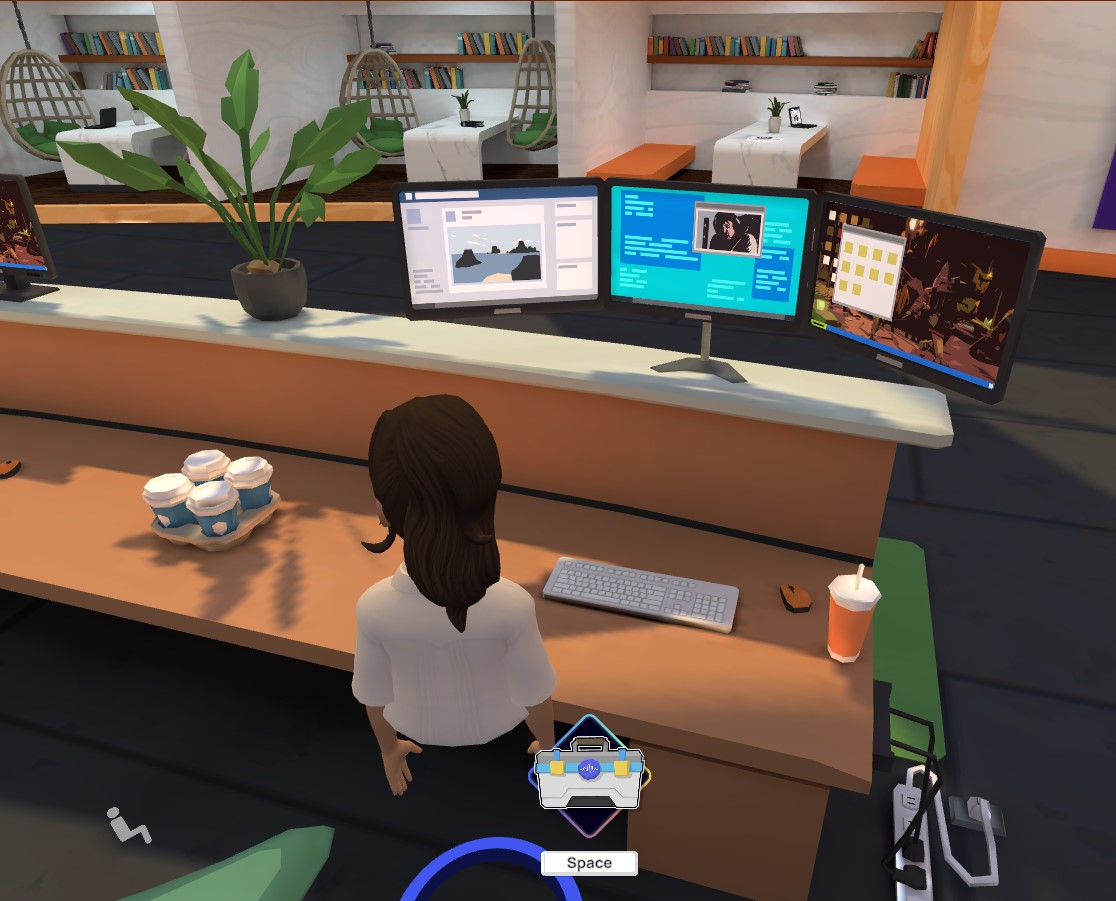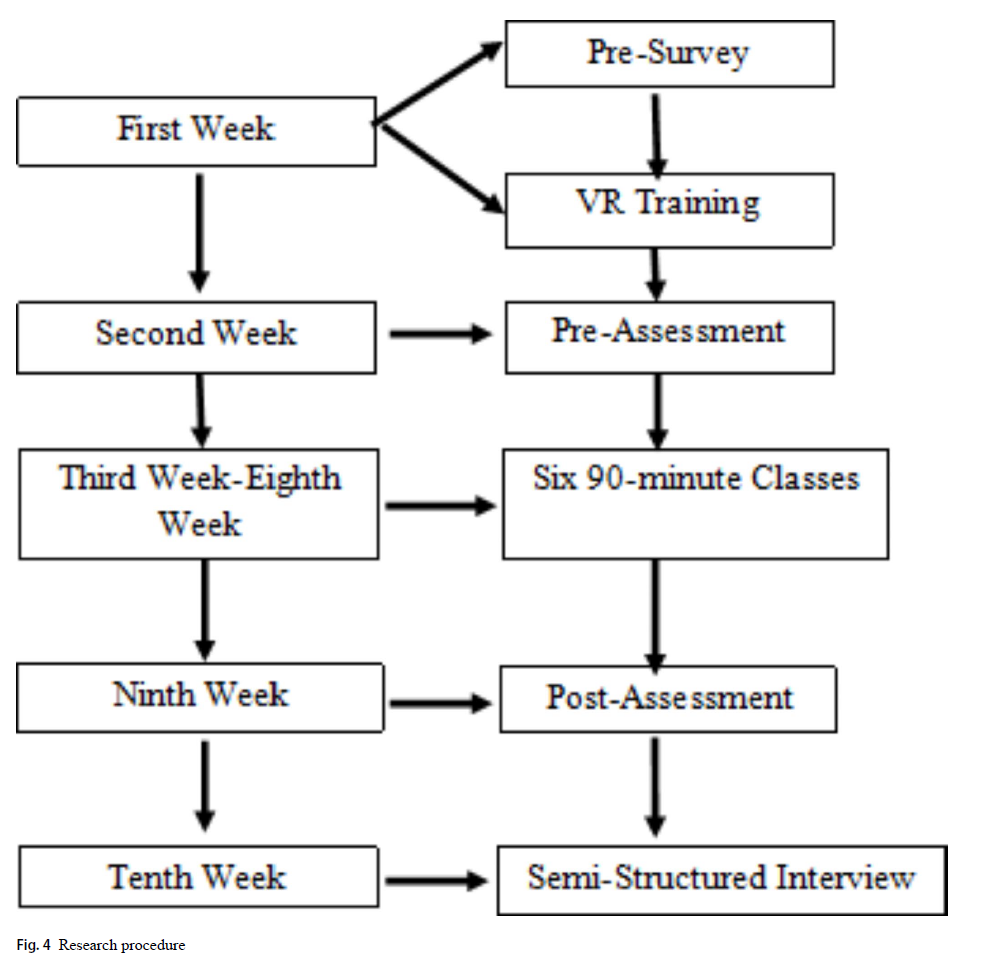Purdue University Finds IMMERSE Boosts English Learners’ Speaking Skills by 24%
IMMERSE Insights
- 24% Speaking Improvement in Just 8 Classes: Purdue University research found learners significantly improved overall speaking performance by 24% after eight immersive sessions, with vocabulary gains of 38%, fluency improvements of 25%, and grammar gains of 26%.
- Virtual Environments Create Lasting Memory: Students reported that realistic 3D scenarios helped bridge the gap between classroom learning and real-world application by making lessons more memorable, with one noting "It is easy to remember the knowledge because VR is so real, and it leaves a deeper impression."
- Peer Collaboration Builds Confidence: The study revealed that working together in immersive environments increased learners' confidence to communicate in English, with students helping each other overcome vocabulary gaps and successfully completing team-based communication tasks.
Real-World Communication vs. Classroom Practice
When it comes to learning a language, there's nothing quite like practicing in real-life situations. This challenge is particularly acute for corporate training programs, where employees must develop real-world communication skills for international business contexts. But for many learners, opportunities to speak English in authentic contexts are limited, and classroom role-plays can only go so far.
That's why Purdue University partnered with IMMERSE to explore whether immersive virtual environments could create the kinds of realistic, interactive contexts needed to truly strengthen speaking skills.
The results? Pre-post tests showed that after just eight speaking classes in IMMERSE's immersive environments, learners significantly improved their overall speaking performance by 24% (p < .001, large effect), including significant improvements in 4 measures:
- Fluency: +25% (p < .001, medium effect)
- Vocabulary: +38% (p < .001, small effect)
- Pronunciation: +11% (p = .007, medium effect)
- Grammar: +26% (p < .001, small effect)
Measuring the Real-World Effectiveness of Immersive English Training
The study, conducted by Purdue University researchers Weijian Yan and Victoria Lynn Lowell, involved 16 first-year English majors at a university in China. Over a 10-week period, students participated in eight role-play speaking classes inside IMMERSE’s interactive virtual environments.

Each class took place in a realistic 3D scene and was designed to expose students to scenarios that are commonly encountered when traveling abroad, such as checking in at an airport and ordering food at a restaurant or paying the bill at the end of a meal.
Students found these authentic contexts immediately memorable:
"It is easy to remember the knowledge because VR is so real, and it leaves a deeper impression."
The realistic scenarios also helped students connect their learning to future real-world applications:
"If I ever get the chance to take an airplane, I can probably show them that it's not my first time getting on a plane."
Learners were assigned different roles and completed collaborative tasks that required authentic conversation during each session. An experienced English instructor guided each session, using IMMERSE’s built-in teaching tools to introduce new vocabulary and grammar, model correct pronunciation, and provide real-time feedback. Students could interact with 3D objects in the scene - for example, handling passports at the airport or menus at a restaurant - making their practice even more lifelike.
This expert guidance proved crucial for student success:
"When we are having conversations with a partner, sometimes I don't know what to say, or we finish the conversation too quickly. Teachers gave us some guidance or tips to expand the conversation."
Students particularly valued the scaffolding they received, which helped them build their oral communication skills step by step:
"The most useful interaction with the instructor is feedback and scaffolding on how to make the dialogue."

Why Immersive Learning Creates Transferable Language Skills
The study followed a “situated learning” approach, which emphasizes learning in the same type of environment where skills will actually be used. By creating a realistic and safe space to practice, IMMERSE helped students make meaningful connections between the language they were learning and how they would use it in real life.
In interviews, students highlighted key reasons the VR experience worked so well:
- Authentic Contexts and 3D Immersive Environments made lessons more memorable
- Authentic Activities Relevant for Learners’ Lives helped bridge the gap between classroom learning and real-world application
- Real-time Coaching from Expert Instructors helped to scaffold the learning process
- Collaboration between peers built confidence
Students understood how their experiences in IMMERSE would transfer to different contexts. One student remarked, "I remember one class where we role-played as crew members and passengers at an airport, imagining it could be our future job. It was great practice."
Another noted the versatility of the skills: "Take the customer and the salesperson as an example; we will be the customers when we are shopping, but we can also become a salesperson in the future, and both of those conversations are useful."
The collaborative nature of the immersive environment also built crucial confidence. Working together in realistic scenarios, students supported each other through challenging communication tasks. A student reported: "I felt happy and satisfied when communicating with partners when we completed tasks successfully as a team. Sometimes I don't know how to express something due to the lack of vocabulary, idiomatic usage, or sentence patterns—I can't express some complex ideas, but my peers can help me."
This peer support created a positive cycle of confidence building:
"I can cooperate with my partners, and this makes me more confident to communicate with people in English."
Students also found that visual context enhanced their vocabulary retention: "If I can see the things related to the words I want to memorize, I can remember them easily."
IMMERSE as a Model for Future Language Training
The Purdue study reinforces what a growing body of research has already shown: when learners can practice in realistic, interactive environments — and receive targeted feedback in the moment — their skills improve faster. In this case, IMMERSE’s blend of authentic contexts, meaningful activities, expert guidance, and peer collaboration gave learners not only measurable gains in proficiency but also the confidence to use English beyond the classroom.

For HR leaders and L&D professionals seeking measurable results from their language training investments, the Purdue study demonstrates why leading global organizations choose IMMERSE over traditional language apps. Our corporate clients consistently achieve 60-80% participation rates compared to just 5-15% with conventional solutions, while significantly reducing cost-to-fluency and building the real-time communication skills their teams need for international business success. Discover how IMMERSE's research-backed platform can deliver similar results for your organization—schedule a demo today to see our immersive workplace scenarios in action.
Read the full peer-reviewed research study here:
https://link.springer.com/article/10.1007/s10055-024-01061-5
.png)



























